LATEST NEWS


Traveling to and from Israel to take care of his cancer-stricken dad caused Ari Gottlieb to leave a full-time job in sales. As a result, the 37-year-old Los Angeles resident sought “on-demand” employment as an Uber ride-share driver in March 2013. Gottlieb told Capital & Main by phone that he provided nearly 3,000 rides to Uber customers before the company permanently “deactivated” (e.g., fired) him in August 2014.
Deactivation severs drivers’ connection to Uber’s app-based platform. Without that digital access to passengers, drivers are unable to earn income.
“The company contended that I was canceling customer requests for rides,” Gottlieb said. “It was true, but I didn’t have a choice, due to traffic, where I was and the location of the request. I hoped that the customers got a closer driver. Spending 30 minutes driving for a one or two-mile Uber customer trip didn’t make sense.”
Gottlieb labored as an independent contractor,
» Read more about: A Clash of Conveniences: Uber’s "Deactivation" of Drivers »
It’s hard to imagine now, but there was a time when San Francisco was considered a working-class town. It had always been home to a generous share of bohemians, dilettantes and tycoons, of course – but it had also been the city of unchallenged union power, the general strike and rough-hewn but familial neighborhoods spilling from the Fillmore District to Potrero Hill. It’s where even Jack Kerouac worked as a brakeman for Southern Pacific.
“Anyone who disappears,” says a character in The Picture of Dorian Gray, “is said to be seen at San Francisco. It must be a delightful city and possess all the attractions of the next world.” Generations of Americans in search of reinventing themselves have agreed – along with those simply searching to invent. This latter group of “tech bros, hipsters and yoga yuppies” is the focus of Alexandra Pelosi’s 40-minute documentary, currently viewable on HBO TV and its streaming platforms.


A few weeks ago I went to a conference in Miami on infrastructure private-public partnerships, or “P3s.” We’ve written plenty about the pitfalls of P3s that don’t have strong public protections. I learned at the conference that Miami has big plans. We’re paying close attention and helping local advocates ensure that these plans to rebuild Miami serve taxpayers, workers and families, not just private investors.
Miami-Dade Mayor Carlos Gimenez spoke at the conference and made it clear that his vision includes privatizing essential public goods. “It used to be Miami-Dade County wanted to operate everything,” Gimenez said. “I don’t want to operate anything.” He talked about tapping the private sector to finance, build and operate a new transit line and courthouse. A P3 for a new water treatment plant is already underway.
Miami is growing fast and has real infrastructure needs.
» Read more about: Miami: Public Interests or Privatized Development? »


Wisconsin Governor Scott Walker may have dropped out of the presidential race, but his influence is still haunting public workers, as evidenced by a bill that now sits on the desk of California Governor Jerry Brown. That legislation, SB 331 or the Civic Reporting Openness in Negotiations Efficiency Act (CRONEY), is the latest flashpoint in an ongoing war that Walker helped trigger when he moved to roll back the rights of public employee unions in early 2011.
While Walker was met with a huge backlash that drew protesters from across the country, in Orange County, local officials saw a green light to advance their own agenda against organized labor. Just a week after Walker signed Act 10, eviscerating collective bargaining rights for government workers in Wisconsin, the city of Costa Mesa issued layoff notices to nearly half its employees, paving the way for the outsourcing of hundreds of union jobs.
» Read more about: The Ghost of Scott Walker Visits Jerry Brown »
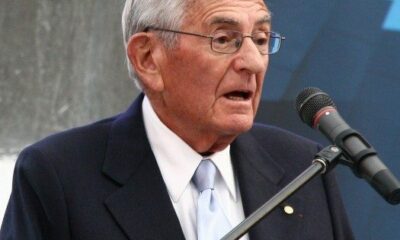

If there were still any doubt about Eli Broad’s desire to gut traditional public education, it has been erased by his much-discussed “Great Public Schools Now” initiative, a draft of which LA Times reporter Howard Blume obtained last month.
Broad’s 44-page proposal outlines plans to replace half of LAUSD’s existing public schools with charter schools. “Such an effort will gather resources, help high-quality charters access facilities, develop a reliable pipeline of leadership and teaching talent, and replicate their success,” states the document. “If executed with fidelity, this plan will ensure that no Los Angeles student remains trapped in a low-performing school.”
According to the proposal, Broad wants to create 260 new “high-quality charter schools, generate 130,000 high-quality charter seats and reach 50 percent charter market share.”
(Actually, LAUSD has 151,000 kids in charters now: 281,000 out of 633,000 LAUSD students is 43 percent. This isn’t the only imprecision in the proposal.)
The estimated cost of this LAUSD transformation would be nearly half-a-billion dollars.
» Read more about: Eli Broad and the End of Public Education as We Know It »
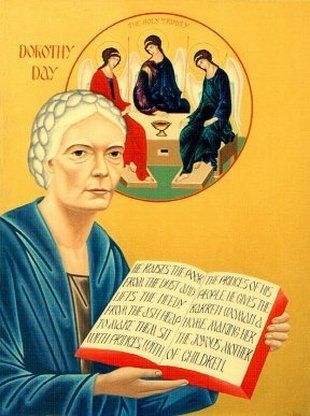

In his speech to Congress, Pope Francis praised Dorothy Day — along with Abraham Lincoln, Martin Luther King Jr., and Thomas Merton — as one of four “representatives of the American people” whom he admired.
Pope Francis was probably the first pope to mention Day’s name in public. It is unlikely that anyone else who addressed Congress in the past had uttered her name.
No doubt most members of Congress — and most Americans watching the speech on television or listening on the radio — had never heard of her. Many of them would have had to Google her on their iPhones and tablets. Some of them — like House Speaker John Boehner, the arch-conservative who invited Pope Francis to speak to Congress — might not have been pleased with what they discovered.
Day (1897-1980) founded the Catholic Worker movement on the principles of militant pacifism, radical economic redistribution,
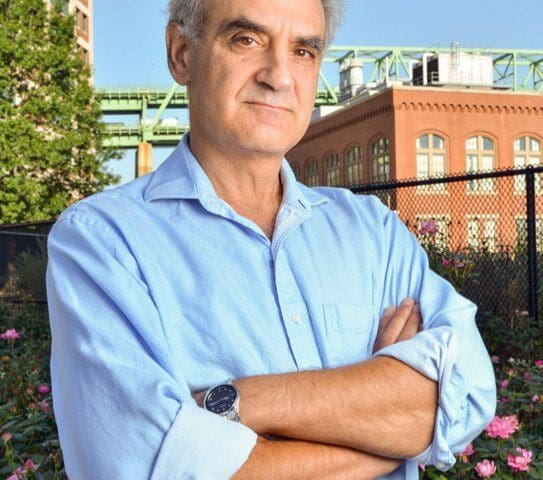
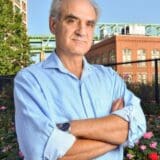
It’s that time of year when I look for my name on the list of MacArthur Fellows, and not finding it once again resolve to keep working and wait until next time. But truly, perusing such a list is as humbling as it is inspiring.
From puppeteers and choreographers to novelists, set designers, economists, chemists, sociologists, journalists, educators, environmentalists and community leaders, the MacArthurs each year offer a who’s who of the best and the brightest, making us feel optimistic about the capabilities of the human mind and spirit.
“These 24 delightfully diverse MacArthur Fellows,” as MacArthur President Julia Stasch states, “are shedding light and making progress on critical issues, pushing the boundaries of their fields, and improving our world in imaginative, unexpected ways.”
And what’s especially unique about the MacArthur Genius grant, as stated on the foundation’s website, is that “the fellowship is not a reward for past accomplishment,
» Read more about: Geniuses Among Us – the MacArthur Foundation Class of 2015 »


Last week, the Center for Media and Democracy (CMD) released striking data about the rapid turnover of charter schools. CMD’s state-by-state list of closed charters shows that, since 2000, these schools have failed at a much higher rate than traditional public schools. And over this time, millions of federal dollars went to groups planning to start charter schools that never even opened.
Instead of giving children the ‘disruption’ of a school closure, we should do everything we can to give every child access to a great school.
Earlier this month, teachers and school staff in Seattle did just that. After a five-day strike, they won a better education for students at traditional public schools across the city. Elementary school students now have guaranteed daily recess, which many parents had wanted, and special education teachers will teach smaller, more individualized classes.


“How do you spell your name?” asked the beltway woman staring at her laptop in the lobby of a lavish Southern California resort. Was she Googling me? I tried not to panic. Instead, playing up the jetlag, I quipped that I really did know my name by heart and gave her one of my business cards that said I was a consultant. Then I realized she was typing my name to put on my badge. Casually she handed me my lanyard, schedule and swag bag.
I was in!
Why are reporters barred from attending the Community Financial Services Association of America (CFSA) annual conference? Why all the secrecy? The organization says full disclosure and transparency are part of their best practices – but no media or streaming are allowed at its annual shindig. This is a $46 billion dollar industry based on subprime (they now call it nonprime) customers —
» Read more about: Payday Lenders: 'We're Not Bottom Feeders!' »
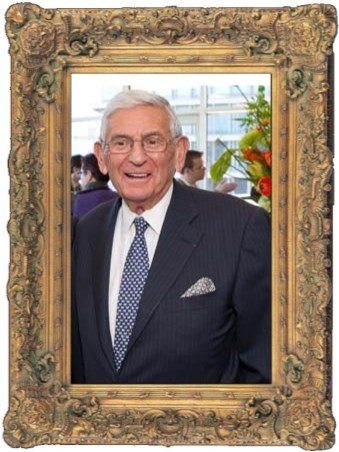

There now is a flow of fresh cultural monuments in Los Angeles that runs from the High School of the Arts over to Disney Hall. This includes, of course, the 36-year-old Museum of Contemporary Art, with which billionaire philanthropist Eli Broad was once deeply involved, and which Broad’s new art museum now competes with. All of a 30-year sudden, we have a cultural downtown center, complete with a hinterland of new bars, stores, costly restos and so on.
Little is left of the downtown of 40 years ago – or of its scruffy arts bohemia. But that is the way of these things: Yupster egg joints are replacing the old Grand Central Market stalls that sold fruit for 20 cents a pound, new buildings arise on former parking lots where dead people sometimes turned up in the cars of those who worked overnight nearby.
The Broad museum (it’s officially called “The Broad”) looks like a mammoth white-enameled Claes Oldenburg version of a Sur La Table cheese grater.


Sometimes religious people tend to be slower to adapt to changes coursing through the culture, especially with concerns about human-caused climate change. Even though polling shows Catholics, for example, to be slightly ahead of the national curve of global warming awareness, further inspection reveals that only 53 percent of white Catholics think climate change is a critical or major problem, although 73 percent of Hispanic Catholics do. These figures were measured a year ago, but there are signs that most church members aren’t even aware of the Pope’s environmental Encyclical, released this past June.
Those figures still fall short of the nation as a whole. Some 91 percent of Democrats, 78 percent of independents and even 51 percent of Republicans think the government should be doing more about climate change. One would think that’s too awesome a majority for a deadlocked Congress to ignore.


Two court orders and the most expensive wrongful death settlement in California history should be enough. But not for Corizon, a corrections health care company owned by a private equity firm.
For seven months earlier this year, Mario Martinez, a prisoner in Corizon’s care at the Dublin, California Santa Rita Jail, suffered from asthma that kept getting worse. A judge issued two court orders requiring the company to provide Mario urgently needed surgery, but they didn’t operate. While Mario suffered, Corizon even settled a lawsuit for $8.3 million with the family of a prisoner who, five years earlier at the same jail, had died in the company’s care.
In July, Mario suffered an asthma attack, collapsed in his cell and died.
Mario’s mother, Tanti Martinez, had hoped to bring her son’s story to Pope Francis, who on Sunday visited a Philadelphia jail that also contracts with Corizon.
» Read more about: Cruel and Unusual Punishment: Private Correctional Health Care »
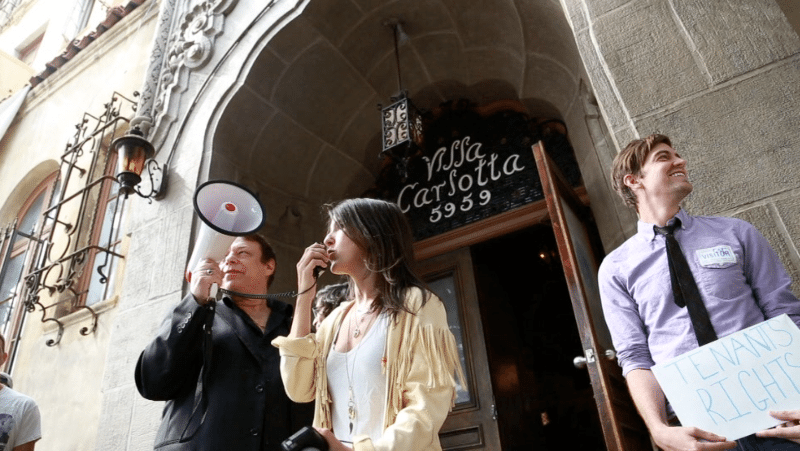

History may record the August 2014 sale of the Villa Carlotta in Hollywood’s Franklin Village neighborhood as the moment in time when the legendary ‘Grande Dame’ became a statistic.
The 1926 apartment building was famously a stop along the path through Hollywood for numerous actors, musicians and other artists, but it has also been a home to those like eighty-three year old Sam Fuller, who lived there for 40 years. He and many other long-term residents who had hoped to live at the Carlotta for the rest of their lives received eviction notices just before Christmas last year.
“We were [being evicted and then] atomic-bombed—Ellis-Acted,” said Sylvie Shain, one of the few remaining residents, referring to a 1985 state law that allows landlords to evict tenants from their rent-controlled units if they are changed to non-rental use.
The Villa’s new owners, CGI Strategies, are attempting to use the Ellis Act to convert the 50-unit rent-controlled complex into a luxury hotel for extended stay tenants.
» Read more about: Villa Carlotta’s Tenant Warriors Fight to Save Homes and History »


He’s been a pope of many firsts already. The first to invite Catholics to forgive women who have had abortions, and the first to refrain from judging gay people to cite just two that have made headlines. But he’s also arguably the first pope to press hard against not just the reality of poverty, but the culpability of the economic system that is in large part driving it. He’s vocal about immigration. It’s as if Pope Francis is the first pope who is actually listening, and that makes him relevant in a way his predecessors simply were not.
He’s also about to be the first pope to ever speak before Congress. We can only hope they’ll listen. Since nearly a third of them are Catholics, I think many of them will. In fact, there are more Catholics in Washington these days than ever. Six of the 9 Supreme Court Justices are Catholics,
» Read more about: The Listener: Pope Francis Sets a Different Course »


“We’re not here because Mr. Kaplan helped us do better on standardized tests,” said one of the nearly one thousand students, former students, teachers, and friends gathered Sunday in the auditorium of Hamilton High School on Robertson to honor the beloved teacher Alan Kaplan who died August 29th.
Mr. Kaplan taught history and psychology in Hamilton’s Humanities Magnet program for 33 years. Through his teaching Kaplan was determined to do something about the achievement gap between white students and students of color. “He was devoted to helping students understand the process, the psychology and the history of racism in our country, believing it would be therapeutic,” said a colleague. Using “The Peoples’ History of the United States” by Howard Zinn as his history text, Kaplan’s lesson plans connected students to what was happening beyond the school walls. “He opened up the world to us” was how a former student,
» Read more about: "Don’t Believe Everything You Think." Remembering Teacher Alan Kaplan »


Twenty-six-year-old Takele Gobena is part of the “on-demand” economy, working full-time as a driver for Uber and part time for Lyft. The Ethiopian immigrant quit his job at the Seattle-Tacoma International Airport and purchased a new car to drive for the ride-hailing firms, believing it would make him a better provider for his one-year-old daughter. Instead, Gobena now finds himself in debt and, after expenses, making well below minimum wage. But because Uber and Lyft drivers are classified as independent contractors, Gobena is not protected by minimum wage laws.
Gobena’s plight is an increasingly familiar one. A new report from the National Employment Law Project, “Rights on Demand: Ensuring Workplace Standards and Worker Security In the On-Demand Economy,” highlights the problems so many on-demand workers face: “Characterizing workers as non-employees has serious negative consequences for them: non-employees have no statutory right to minimum wage, overtime pay,


In the 1947 science fiction novel Greener Than You Think, a scientist invents a powerful fertilizer intended to boost crop production and combat hunger. The salesman she hires, however, sees more business potential in lawn care, and convinces a Los Angeles homeowner to try the formula on a yellowing, “sad and sickly” front yard. When the salesman stops back the next day, the lawn is transformed. “There wasn’t a single bare spot visible in the whole lush, healthy, expanse. And it was green. Green . . . over every inch of its soft, undulating surface: a pale apple green where the blades waved to expose its underparts and a rich, dazzling emerald on top.”[i]
The lawn grows uncontrollably in the novel, and the grass ultimately takes revenge and crushes cities like a green giant. Whether or not author Ward Moore chose the L.A.
» Read more about: Drought Lawns: The Ungreening of Los Angeles »


As major climate legislation that would dramatically increase our investment in renewable energy approaches the Governor’s desk, this is a critical time to be thinking about low-income communities, including South Los Angeles, for whom the benefits of renewable energy investment have been largely out of reach.
The Los Angeles Alliance for a New Economy (LAANE), in partnership with my organization, Strategic Concepts in Organizing and Policy Education (SCOPE), recently conducted an analysis of the L.A. Department of Water and Power’s most established renewable energy program, the Solar Incentives Program (SIP). We found that this residential rooftop solar initiative has left South L.A. behind, along with Wilmington, Boyle Heights, Pacoima and other communities.
This program offers incentives for residents who buy and install their own rooftop solar energy systems from private solar companies. In the past 15 years, LADWP has invested more than $115 million of ratepayer funds to support the development of residential rooftop solar.
» Read more about: Realizing the Promise of Solar for South Los Angeles »
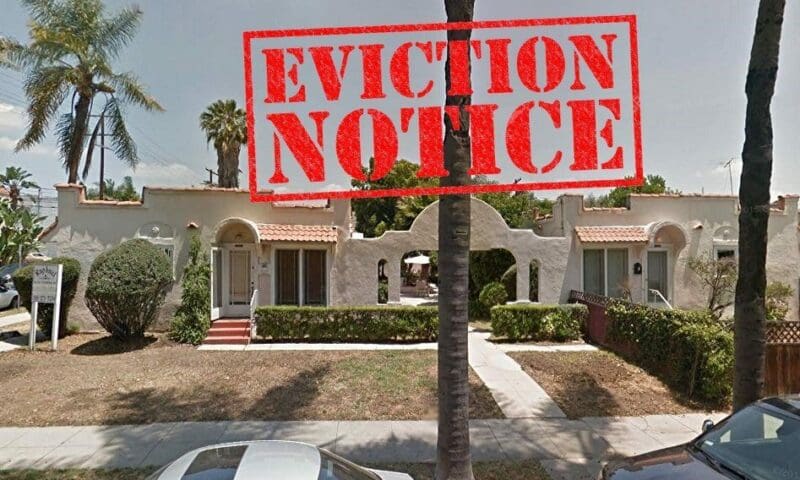

Thanks to the determined efforts of tenant activists and area residents, real estate developer Matthew Jacobs’ plan to demolish eight affordable housing units in the Fairfax District and replace them with “luxury” living accommodations has been put on hold—for now. Jacobs (who recently resigned from his chairman post at the California Housing Finance Agency), his business partner Guy Penini and their company, Bulldog LLC, had already begun demolition of the rent-controlled bungalow structures located at 750-756 N. Edinburgh Avenue (where they used the Ellis Act to evict eight families), when the city abruptly halted their tear-down undertaking.
Tenant activist Steve Luftman, who lives in another Jacobs-owned building that was also slated for the wrecking ball, is involved in the Edinburgh preservation project — just as he was for the building that he lives in. Luftman’s Flores Street apartment complex was designed by noted architect Mendel Meyer,
» Read more about: Historic, Affordable Bungalows Saved from Wrecking Ball »


It was 2008 and presidential hopeful Barack Obama was inspiring millions of people with his promise to disrupt politics as usual – and a new startup called Airbnb was turning that enthusiasm for change into millions of dollars. Denver, the site of that year’s Democratic National Convention, was expecting 80,000 people to come watch the senator from Illinois accept his party’s nomination. The city had space for less than half.
“Obama supporters can host other Obama supporters,” is what CEO Brian Chesky recalls thinking to himself. In a profile of the company, the Huffington Post notes how that idea was turned into cash. “Airbnb, which lets users rent out part or all of their homes, blasted bloggers in Denver with company information.” It “sold ‘Obama O’s’ cereal around town,” garnering news coverage as “an innovative solution to the city’s lodging crisis.”
Founded in 2007, Airbnb is today valued at more than $25 billion and the for-profit sharing economy it helped usher in is no longer so new.
» Read more about: The Sharing Economy's Liberal Lobbyists »